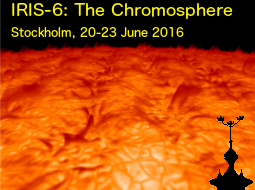Speaker
Vasco Manuel de Jorge Henriques
(Queen's University Belfast)
Description
Type II spicules have been shown to reach coronal heights by Pereira et al. (2014)
with early evidence going back to De Pontieu et al. (2011). Evidence of transition
region signatures of their on-disk counterparts, RBE and RREs, was found with IRIS by
Rouppe van der Voort et al. (2015). Recently, Henriques et al. (2016) found coronal
RBE/RRE counterparts in the AIA 304 and AIA 171 channels using an automated
detect-and-match method. While some transients across all channels are very obviously
related simply by looking at their overlap, morphology, and temporal coincidence, the
automated detection combined with a solid statistical analysis allowed the
computation of a minimum value, for the percentage of the transients detected, that
are related across all channels (and thus related across the chromosphere and the
corona). This was achieved by using a combination of Poisson-trial statistics and
Chernoff bounds, which were then used to infer the statistical significance of the
values, test the null hypothesis, and as a constraint on the parameters of the match
criteria. This analysis and the numbers it supports are the focus of the talk, as
well as a discussion of the potential of such techniques for detection analysis in
noisy data in general. Such data is common in low contrast lines and low signal to
noise observations, especially coronal satellite data.
Author
Vasco Manuel de Jorge Henriques
(Queen's University Belfast)

